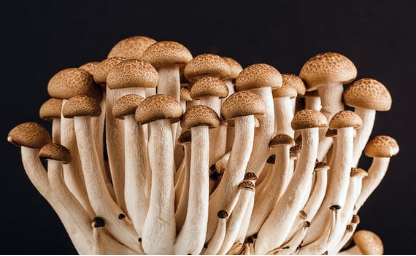In recent years, with the development of cultivation technology of edible fungi, the continuous expansion of planting area and the increasing number of planting varieties, mushrooms have become an important cash crop in agricultural production. In the mushroom growing area, a lot of waste is generated every year. The production practice shows that 100kg of breeding material can harvest 100kg of fresh mushrooms and get 60kg of mushroom residue waste at the same time. The waste not only pollutes the environment, but also causes a large amount of waste of resources. But using mushroom residue waste to make bio-organic fertilizer is popular, which not only realizes waste utilization, but also improves the soil by applying mushroom residue bio-organic fertilizer.

Mushroom residues are rich in nutrients needed for seedling and growth of vegetables and fruits. After fermentation, they are made into bio-organic fertilizers, which have good effects on planting. So, how does mushroom residue turn waste into treasure?
Using mushroom residue fermentation to do bio-organic fertilizer method steps:
1. Dosage ratio: 1kg of microbial agent can ferment 200kg of mushroom residue. The waste mushroom residue should be crushed first and then fermented. Diluted microbial agents and mushroom residue are well mixed and stacked. In order to achieve a proper C/N ratio, some urea, chicken manure, sesame residue or other auxiliary materials can be added appropriately.
2. Moisture control: after mixing mushroom residue and auxiliary materials evenly, spray water to the material stack evenly with water pump and turn it constantly until the moisture of the raw material is about 50%. Low moisture will slow down the fermentation, high moisture will lead to poor aeration of the stack.
3. Compost turning: turning over the stack regularly. Microorganism can quietly multiply and degrade the organic matter under the conditions of suitable water and oxygen content, thus generating high temperature, killing the pathogenic bacteria and weed seeds, and making the organic matter reach a stable state.
4. Temperature control: the optimal starting temperature of fermentation is above 15℃, fermentation can be about one week. In winter the temperature is low and the fermentation time is longer.
5. Fermentation completion: check the color of mushroom dreg stack, it is light yellow before fermentation, and dark brown after fermentation, and the stack has fresh mushroom flavor before fermentation. Electrical conductivity (EC) can also be used to judge, generally EC is low before the fermentation, and gradually increased during the fermentation process.
Use the mushroom residue after fermentation to test Chinese cabbage growing areas, the results showed that organic fertilizer made of mushroom residue is helpful to improve Chinese cabbage biological character, such as Chinese cabbage leaf, petiole length and leaf width are superior to the normal ones, and the Chinese cabbage yield increase 11.2%, chlorophyll content increased by 9.3%, soluble sugar content increased by 3.9%, the nutrient quality improved.
What factors need to be considered before setting up a bio-organic fertilizer plant?
Building bio-organic fertilizer plant requires comprehensive consideration of local resources, market capacity and coverage radius, and the annual output is generally from 40,000 to 300,000 tons. The annual output of 10,000 to 40,000 tons is appropriate for small new plants, 50,000 to 80,000 tons for medium plants and 90,000 to 150,000 tons for large plants. The following principles should be followed: resource characteristics, soil conditions, main crops, plant structure, site conditions, etc.
How about the cost of setting up a bio-organic fertilizer plant?
Small scale organic fertilizer production line investment is relatively small, because each customer’s raw materials and the specific requirements of the production process and equipment are different, so the specific cost will not be provided here.
A complete mushroom residue bio-organic fertilizer production line is generally composed of a series of production processes and a variety of processing equipment, the specific cost or depends on the actual situation, and the use of land costs, workshop construction costs and sales and management costs also need to be considered at the same time. As long as the process and equipment are properly matched and the choice of good suppliers is selected, a solid foundation is laid for further output and profits.
Post time: Jun-18-2021

